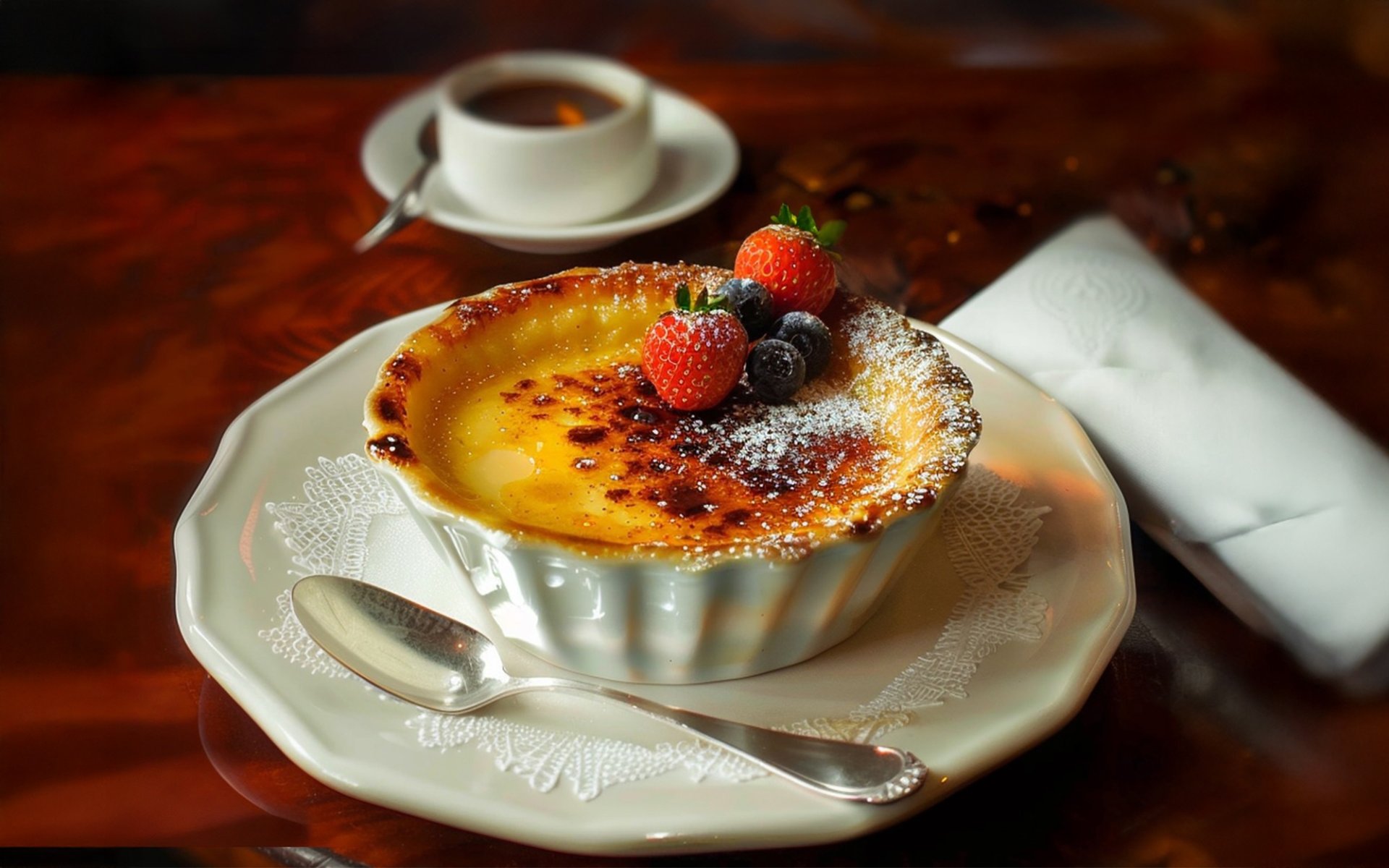Crème Brûlée

When it comes to famous and beloved French desserts, Crème Brûlée undoubtedly comes to mind first. The name literally translates to burnt cream, referring to its distinctive feature: a rich, sweet vanilla egg custard base topped with a hardened layer of caramelized sugar. Today, Rimping Supermarket invites you to explore the story behind the delicious Crème Brûlée.
Mysterious Origins : France or Spain?
Although the name Crème Brûlée sounds authentically French, the true origin of this classic dessert remains a topic of debate within culinary circles.
The French Theory: The most cited evidence dates back to 1691, when a recipe called Crème à l'Angloise (English Cream) appeared in the cookbook Cuisinier Royal et Bourgeois by François Massialot, a French chef who worked for the court of King Louis XIV. This original recipe primarily used egg yolks and milk, with a small amount of flour and sugar sprinkled on top, which was then burned to form a hard caramel layer.
The Spanish Theory: Another intriguing theory suggests that Spain is the origin of Crème Brûlée, as Spain has a dessert recipe called Crema Catalana (Catalan Cream) from the Catalan region. This dessert is very similar to Crème Brûlée but is flavored with orange zest and cinnamon. It is said that this recipe predates François Massialot's, with some references dating back to the 14th century.
Becoming Part of French Culture and Spreading to England
Despite the controversy surrounding its origin, Crème Brûlée has remained an integral part of French culinary culture throughout history, enjoying immense popularity in French households and restaurants. Furthermore, in modern times, French chefs have refined the recipe, incorporating new cooking techniques and officially renaming the dessert Crème Brûlée, meaning burnt cream, a name that perfectly describes its distinctive preparation.
In the 18th century, Crème Brûlée also began to gain popularity in England when Trinity College in Cambridge introduced its own version, known as Trinity Cream or Burnt Cream. This version featured a thicker custard base and a more pronounced hard caramel topping, thus becoming the characteristic English style of Crème Brûlée.
Crème Brûlée : Global Icon and New Innovations
Crème Brûlée transcended its origins to become a symbol of modern culinary art. By the 19th century, it gained increasing popularity in other countries as French cuisine began to play a significant role in the global culinary scene. Renowned chefs and pastry makers incorporated Crème Brûlée into their own menus and served it in luxury restaurants across France and worldwide.
Today, Crème Brûlée appears in many new forms, such as recipes infused with chocolate, matcha, lavender, coffee, or fruit purees added to the custard to enhance its flavor profile. Its presentation also varies, often served with fresh fruits like strawberries and blueberries, to balance the richness and add appealing color.
Regardless of which origin story you believe, Crème Brûlée continues to be a dessert that offers a delightful experience, with its creamy custard and the satisfying crack of its brittle caramel topping.
You can find high-quality ingredients for making delicious Crème Brûlée at all Rimping Supermarket branches!


